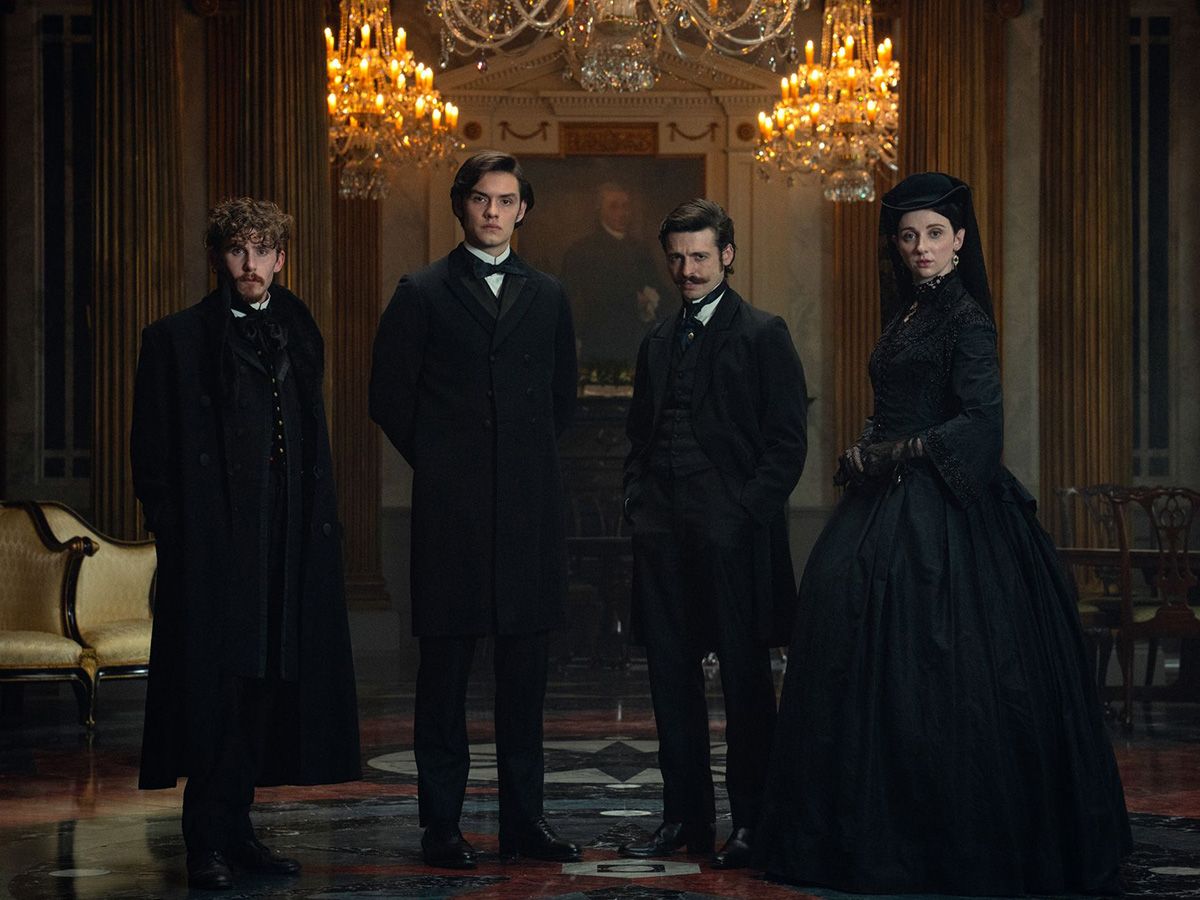There are many reasons to watch House of Guinness, the lavish eight-part Netflix drama series based on the real Guinness family, famed for their dark stout and building a brewery empire once valued at £200 million. First, it is created by Steven Knight, which automatically draws in fans of Peaky Blinders. Secondly, a good rich-people drama has been sorely missed ever since Succession exited our lives in 2023. And thirdly, the historical fiction drama show also comes with a pacey modern soundtrack spotlighting the music of Kneecap, the very cool (and controversial) rapper trio from Northern Ireland, that is known as much for their provocative lyrics as their pro-Palestine stance.
But besides its 90 percent audience approval on Rotten Tomatoes, there is something else that is likely to pique the interest of Indian viewers. But we’ll get to it in a bit.
Set in 1860s Dublin, House of Guinness follows four Guinness siblings—Arthur, Edward, Anne, and Benjamin—grappling with their father’s legacy and the iconic brewery’s future amidst Ireland’s turbulent struggle for independence. Succession plans of the rich obviously make the series a rich blend of family intrigue, political turmoil, and flair.
Regulars on the Sunday Times ‘Rich List’, the Guinnesses have long ascended into Britain’s aristocracy, with patriarchs holding titles such as Earl of Iveagh, Viscount Elveden, Baron Iveagh, and Viscount Iveagh. Today, they remain not only one of Ireland’s wealthiest families but also among the world’s most prominent dynasties, with a 2025 fortune estimated at £856 million, bolstered by extensive property holdings. Their legacy, however, also carries a fascinating historical twist with an Indian connection.

Their Suffolk estate, Elveden, is home to Elveden Hall, which inspired the family residence in House of Guinness (and has previously appeared in the film Heart of Stone as well as The Crown). But few know that the space once served as the residence of Maharaja Duleep Singh, the last ruler of the Sikh empire in India, during his exile in Britain. Purchased by the Maharaja in 1863, the Georgian manor house was expanded under the architect John Norton, who enveloped the original building within a grand 13-bay west wing. The interiors, inspired by the Maharaja’s native Punjab, feature intricate ceilings and wall panelling, blending Mughal motifs with European design and, thus, resembling the fine Indian palaces that he had once been accustomed to.
After the death of the Maharaja in 1893, Elveden Hall was, in 1894, sold to Edward Cecil Guinness, the first Earl of Iveagh. While the estate remains privately owned by the Guinness family, under the current Lord Iveagh, the opulent India-inspired palace is now open to the public for exclusive viewings of the artistic works of Jack Penny, Elveden’s artist-in-residence, this week.
The exhibition is part of the Dot Project and HeritageXplore partnership to bring contemporary art into the heart of British heritage. “It has been an extraordinary privilege to open Elveden Hall for the first time in its history this year with Lord Iveagh, the Hall’s current custodian from the Guinness dynasty. We’re delighted to have included it in our Artist-in-Residence programme,” said Violet Garnock (nee Manners), Viscountess Garnock and the founder-CEO of HeritageXplore, an online platform that hosts tours of some of Britain’s most historic homes.





